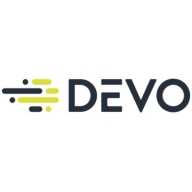

SAP IT Operations Analytics and Devo are competing products in IT operations. SAP IT Operations Analytics seems to have an edge in providing comprehensive support and pricing flexibility, while Devo is recognized for its strong features and robust capabilities.
Features: SAP IT Operations Analytics offers real-time monitoring, predictive insights, and integrated analytics. Devo provides advanced data analytics, real-time threat detection, and scalability. Devo's feature set is more robust, providing greater insights and control.
Ease of Deployment and Customer Service: SAP IT Operations Analytics offers a structured deployment approach with extensive customer support. Devo provides a flexible deployment model with excellent service, though some prefer SAP in traditional IT environments.
Pricing and ROI: SAP IT Operations Analytics has competitive pricing focusing on long-term ROI benefits. Devo, with higher initial costs, offers significant data analysis capabilities that justify the investment. SAP is often chosen by cost-conscious buyers, while Devo attracts those looking for advanced analytical tools.
| Product | Market Share (%) |
|---|---|
| SAP IT Operations Analytics | 1.9% |
| Devo | 4.8% |
| Other | 93.3% |


| Company Size | Count |
|---|---|
| Small Business | 7 |
| Midsize Enterprise | 4 |
| Large Enterprise | 11 |
Devo is the only cloud-native logging and security analytics platform that releases the full potential of all your data to empower bold, confident action when it matters most. Only the Devo platform delivers the powerful combination of real-time visibility, high-performance analytics, scalability, multitenancy, and low TCO crucial for monitoring and securing business operations as enterprises accelerate their shift to the cloud.
We monitor all IT Operations Analytics reviews to prevent fraudulent reviews and keep review quality high. We do not post reviews by company employees or direct competitors. We validate each review for authenticity via cross-reference with LinkedIn, and personal follow-up with the reviewer when necessary.